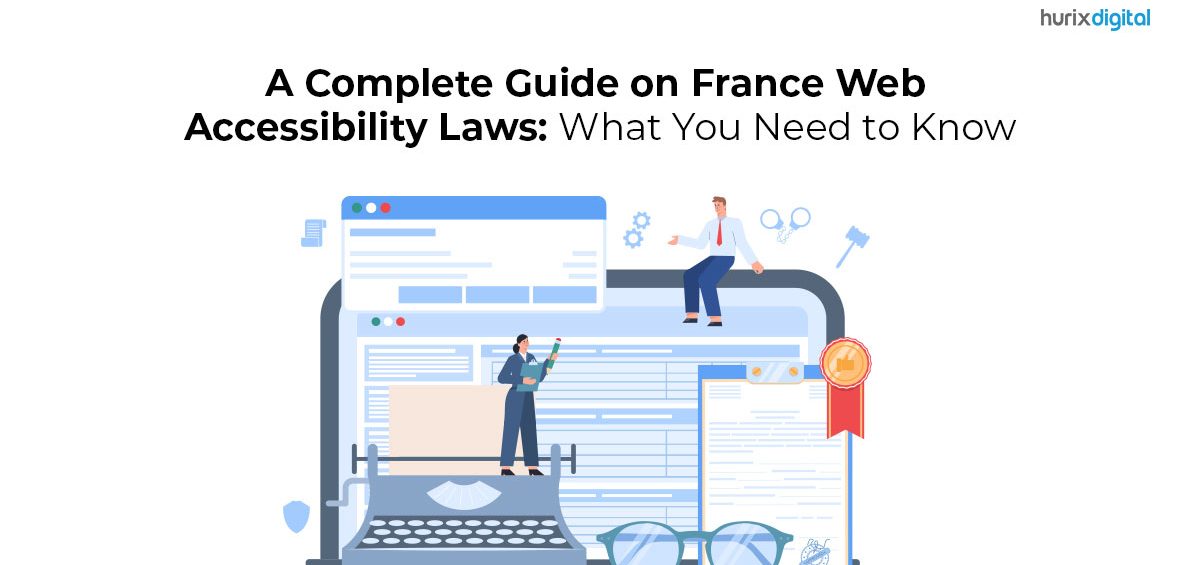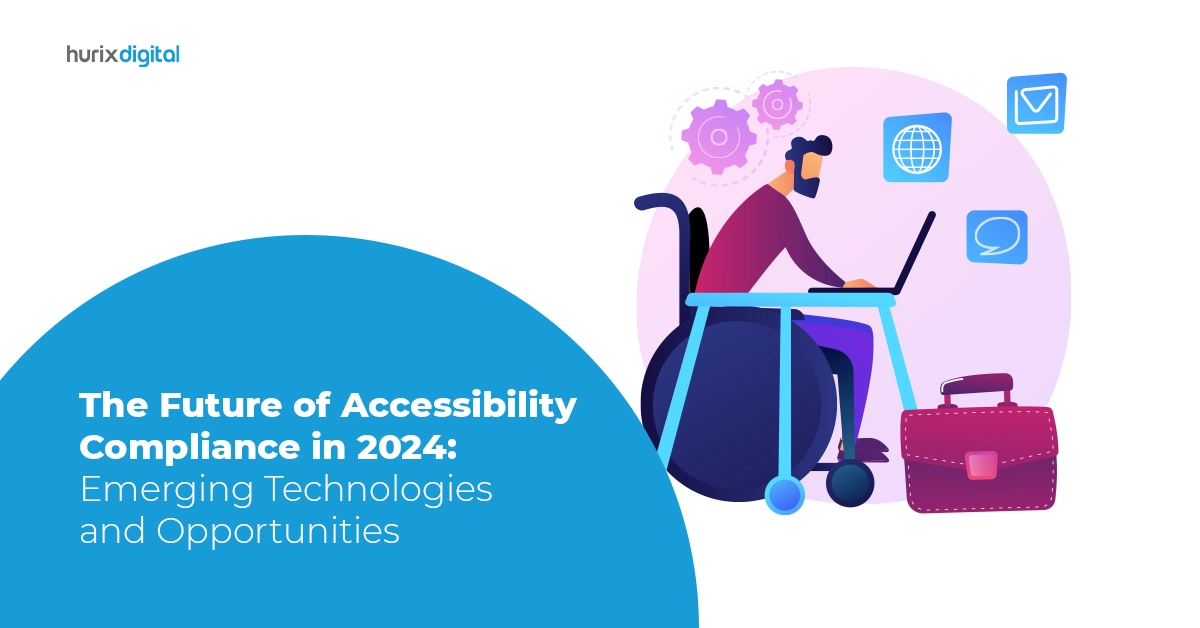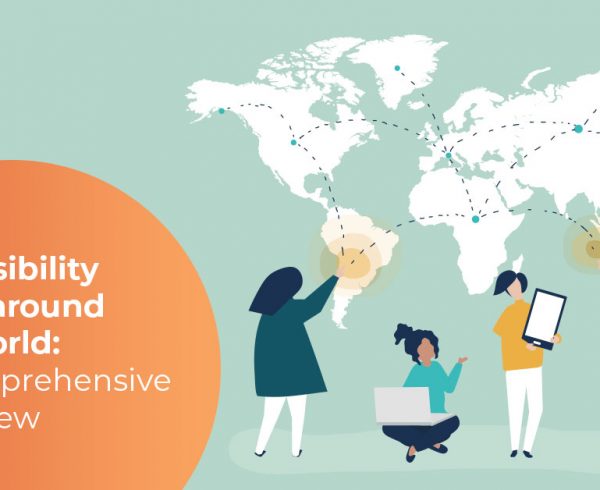Summary
This article outlines all you need to know about France's web accessibility laws, ADA compliance, and web accessibility standards. It has also provided a brief guide on WCAG compliance guidelines for France.
Table of Contents:
- Introduction
- What is France’s Digital Accessibility Law?
- A Brief Guide on WCAG Compliance Guidelines for France
- Top 5 Tips on How to Ensure WCAG Website Compliance in France
1. Plan to Achieve Level AA Compliance
2. Build a Remediation Strategy
3. Focus on Regular Accessibility Testing
4. Hire Skilled and Qualified Testers
5. Maintain an Accessibility Plan for All Digital Resources - Conclusion
Introduction
Around 6 million French citizens between the ages of 15 and 64 have a disability. This suggests that the number of individuals needing support to access goods, amenities, and general data online is close to 6 million.
Hence, to ensure an improved lifestyle and availability of resources to people with disabilities, the Government has comprehensible France web accessibility laws that comply with WCAG.
Businesses have to strictly comply with France accessibility laws to avoid expensive lawsuits and build an inclusive digital brand image.
If you are looking for information on how you can make your website accessible, we have got you covered. This article outlines everything you need to know about France’s web accessibility laws, ADA compliance on websites, guidelines, and strategies to ensure your business website is compatible with the requisite laws in the country.
What is France’s Digital Accessibility Law?
Law 2005-102, which forbids unfair treatment of those with impairments, was enacted in France in 2005. Equivalent to the Americans with Disabilities Act ADA web compliance in the United States, Law 2005-102 also specifies stipulated accessibility for “all digital public information services of the State, local governments, and organizations that rely on them.”
France requires public organizations to adhere to the WCAG 2.0-based General Accessibility Reference Framework for Administrations (RGAA). Businesses in France with annual revenue of over 250 million euros have to conform to RGAA. At the same time, smaller companies must offer accessible content but are not explicitly required to abide by RGAA.
Additionally, The European Accessibility Act (EAA) and EU Web Accessibility Directive apply to France because it is an associate member of the EU. These regulations demand that signatory countries take action to guarantee accessible online content, which entails adhering to WCAG.
Also Read: The Ultimate Guide to WCAG Compliance for the Website Developers
A Brief Guide On WCAG Compliance Guidelines For France
The finest strategy for attaining digital accessibility is provided by WCAG 2.1. It works on four basic principles: the digital content must be perceivable, operable, understandable, and robust.
These guidelines are intended to guarantee that websites in France are usable by readers with all abilities and disabilities. WCAG checks compliance by running several tests in three conformance levels, namely, Level A, Level AA, and Level AAA being the most stringent.
Here are a few of the significant barriers WCAG considers while running tests. To meet WCAG website compliance, you need to overcome these:
- Low-contrast text
- Poor Keyboard assistance
- Unavailability of text alternatives
- Incorrect labeling of forms and interactive structure
WCAG advises two types of audits for testing digital content. Firstly, automated tests that scan digital content to trace common accessibility barriers.
Secondly, thorough manual testing that humans examine the content by using screen readers and additional equipment. However, to ensure that your corrections genuinely boost user experiences, manual testing is crucial.
Top 5 Tips on How to Ensure WCAG Website Compliance in France
You must routinely evaluate your material to ensure that it complies with Law 2005-102, ensures ADA compliance for websites, and qualifies for several other accessibility laws.
Utilizing both human and automated tests is recommended, followed by a collaboration with an accessibility specialist to manage any modifications that are required. Some of the proven strategies that businesses can follow to achieve accessibility for websites are as follows
1. Plan to Achieve Level AA Compliance
A website has significant accessibility issues if it does not meet the WCAG 2.1 Level A success requirement. Keyboard navigability, text alternatives for non-text subject matter, and additional fundamental requirements are part of the Level successful criteria.
Although Level A conformity is a great place to begin, Level AA ensures that the information you provide is realistically beneficial to most individuals, irrespective of their skills. Digital accessibility aims to render content helpful for your whole community.
For this purpose, many website accessibility requirements demand Level AA compliance.
2. Build a Remediation Strategy
Remediation accessibility implies the procedure of eliminating obstacles that are detrimental to those with disabilities. Remedial action is taken for mobile applications, websites, and other digital material following auditing for WCAG accessibility.
Everyone participating in remediation should be aware of how crucial online accessibility is. You may cultivate the appropriate mentality by precisely outlining the parameters of the task at hand. Have dialogues with your staff and concentrate on the benefits of each adjustment.
3. Focus on Regular Accessibility Testing
Some businesses mistakenly feel that the process of considering accessibility is over because their application or website was designed to be accessible or, probably, had been evaluated and rectified in previous versions.
Accessibility needs to be monitored and maintained, similar to any other aspect of a business. You can collaborate with reliable accessibility experts who maintain regular WCAG compliance through efficient audits.
4. Hire Skilled and Qualified Testers
Automated tests can detect many accessibility obstacles. However, some WCAG requirements need human judgment. To make sure that the content is as inclusive as feasible, work with professional testers.
They not only make the content accessible but accelerates the reach of the website on various search engines by adding rich text.
5. Maintain an Accessibility Plan for All Digital Resources
From mobile application text to website white papers, ensure all your digital resources are inclusive and accessible. It is sometimes inevitable to overlook the need to test and update your digital documents, such as PDFs.
However, these papers must also adhere to web accessibility standards. These components are essential to ensuring that all users have fair access to the files located on your website and that anybody using assistive technology can accurately grasp the file’s contents.
Also, Check Out: The Difference Between WCAG A and WCAG AA Conformance
Conclusion
Owners of companies, website builders, and illustrators should make sure that their online platforms are accessible to every user by adhering to the WCAG accessibility principles. It could contribute to making websites more accessible and user-friendly for all.
If you are on the lookout to build an accessible online presence for your business, reach out to Hurix Digital. At Hurix, we offer online accessibility testing services to ensure that webpages and web apps abide by accessibility requirements and correspond to WCAG rules.
Our group of WCAG specialists performs in-depth manual testing to find and fix any accessibility problems. Get in touch with our expert team now to make your website accessible and inclusive!








